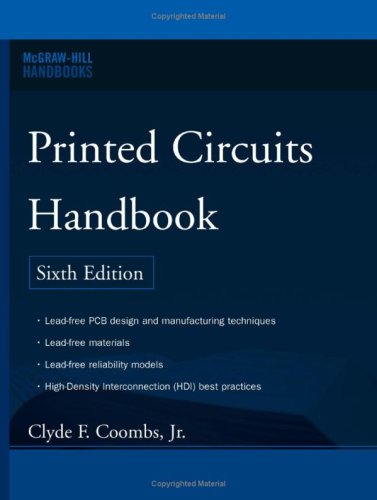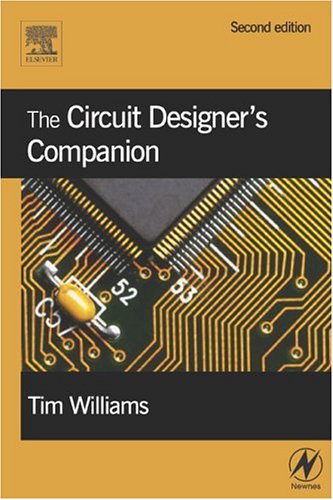
If The Art of Electronics is the bible of electronic circuit design, then the Printed Circuits Handbook is almost certainly the bible of printed circuit board (PCB) technology.
is almost certainly the bible of printed circuit board (PCB) technology.
I say this because even if you disregard the volumes of useful information inside (much of which I have never seen elsewhere online or in print), this book deserves to win ‘bible’ status thanks to its 1000 pages and phonebook-quality heft!
All joking aside, this book is a great resource for anyone is serious about making good PCBs. I have worked with PCBs as a design engineer for several years now, and I learned something about printed circuit boards within minutes of opening the cover. Hours later, I was still flipping pages.
How could I walk away from a book that contains in depth discussions of topics like the difference between water soluble and no-clean flux and how to clean the leftover residue from each? Ever wondered what the myriad of surface finish options your PCB vendor offers you really mean? This book will explain the difference between HASL and ENIG, and why you shouldn’t blindly check the box that says “lead-free” without considering the consequences on your assembly process.
This is the kind of stuff they don’t teach you in school, and as a design engineer I have received only glimpses of in the industry.
Some of the highlights of this book for me are:
- The most thorough discussion of PCB manufacturing that I have ever seen (almost 300 pages!). Want to know how the PCB you just got was made? One layer or sixteen layers, it’s all in here.
- Lots of information about custom laminates, high density interconnect techniques, microvias, blind/buried vias, plating and surface finishes, solder masks, conformal coating, etc.
- Several charts of current handling ability of PCB traces, planes, and vias.
- A chapter on thermal design of PCBs.
- Lots of information about soldering techniques. Ever wondered how soldering works and what flux really does? It’s in here too.
- Seven (!) chapters on design, manufacturing, and test of flex circuits.
Be forewarned that the technical level of this book is fairly high. It is clearly targeted towards people working in the PCB industry, but most engineers and even serious hobbyists would probably get something out of it. That said, this is definitely not a book for beginners!
(And to the other design engineers out there: Want to one-up the manufacturing and reliability guys in the break room? Read this book! :-))
Printed Circuits Handbook (McGraw Hill Handbooks)
after I noticed it on my Amazon
recommendations list (which seems to know my tastes a little too well these days.)


